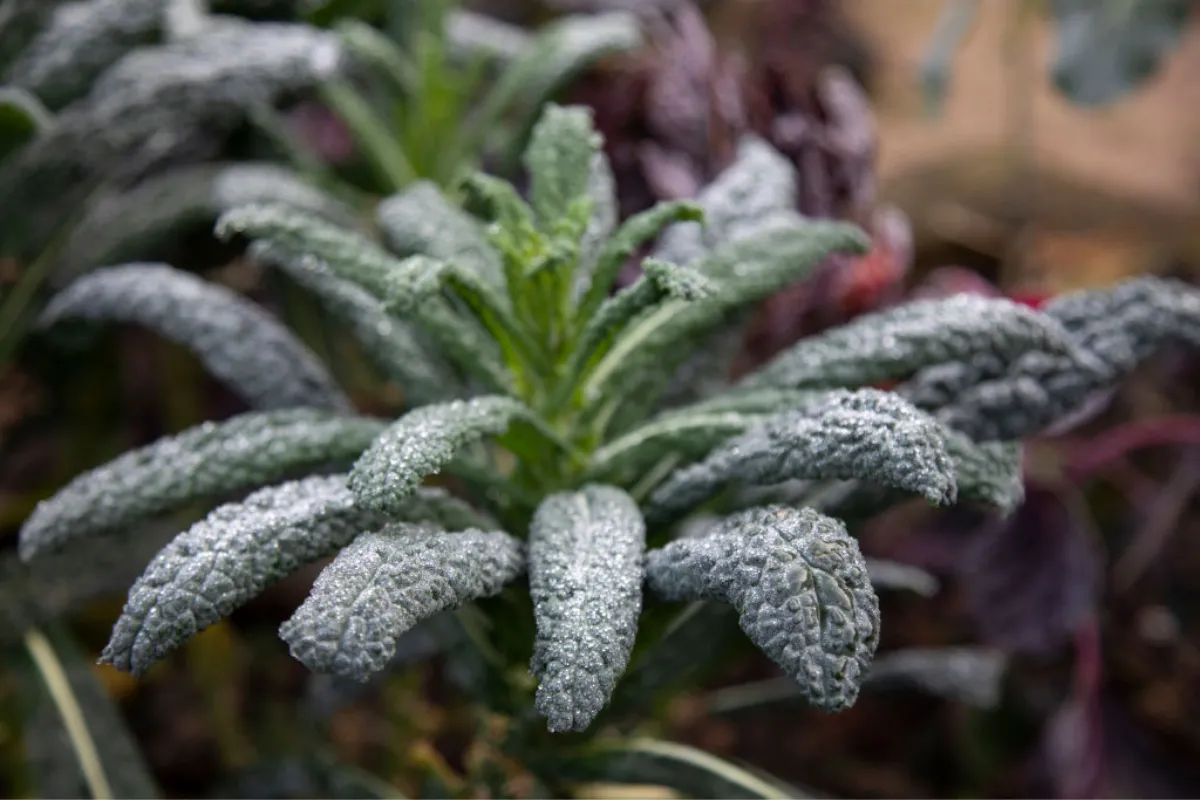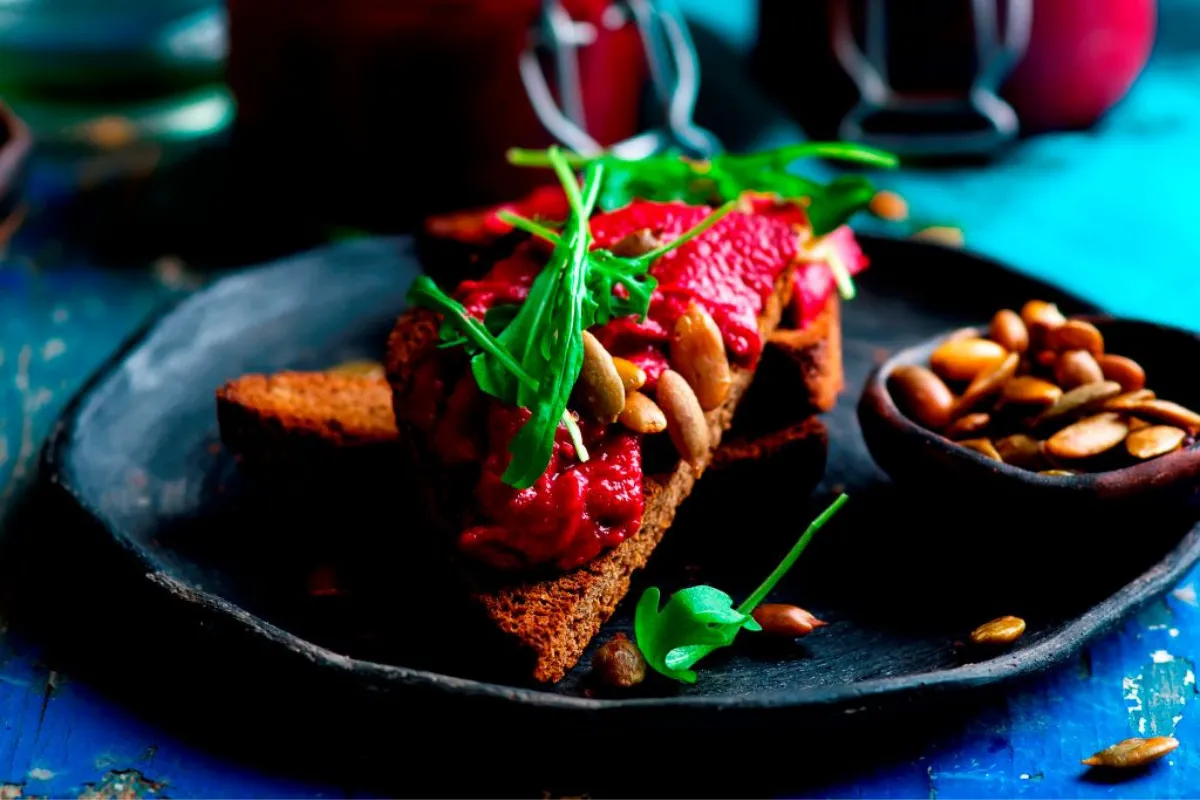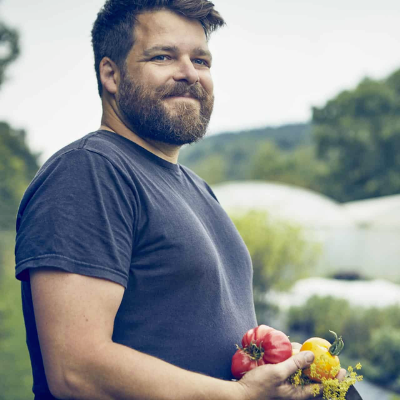At first glance, winter’s offering of fruit and veg might seem limited and unglamorous. But hidden within the deepest darkest month of the year lies a glorious bounty of seasonal British veg, waiting for its turn in the spotlight.
Here's what to eat now, how to cook it and how to get the most from the whole of every vegetable.
Which vegetables are best in winter?
At this time of year, roots, brassicas and alliums are the best choice, when colder weather sweetens root vegetables and makes leafy greens more crisp. This holy trinity of winter veg forms the basis of many delicious and comforting dishes that work well in mid-winter.
I’m a kale lover, and there’s a huge diversity on our greengrocers’ shelves right now. Scots kale, Russian red, sea kale, curly green and deep, dark cavolo nero hardly need any preparation: simply steam and dress with extra virgin olive oil, lemon juice, sea salt and freshly cracked black pepper for an easy but divine side.

Another of my long-awaited favourites are Jerusalem artichokes. This tuberous root tastes rich and satisfying, and is seriously good for gut-health, full of prebiotic fibre (and for this reason, best eaten in small amounts to avoid unwanted side effects). Purée a few and stir them into mashed potato, or roast until they become a touch chewy alongside new potatoes with rosemary and garlic.
Of course, eating local, seasonal and ideally organic produce supports our food sovereignty – but it also means we get best possible nutrition and taste from it. We really are what we eat: fresh food that has been grown with care, nurturing nature, tastes better because of the nutrient-dense soil and biodiverse ecosystem.
How to make the most of the whole vegetable
If we are going to invest in better produce, it makes economic sense to enjoy the whole vegetable with zero waste. I call this root-to-fruit eating – and it is easier than you may think.
For example, root greens are as, if not more, nutritious than the root itself and can be cooked in place of any leafy green. At home, I make a dip with beetroot leaves called Beetroot leaf borani. To make: wash, shred and wilt the leaves in a pan with garlic and extra virgin olive oil, then blend with yoghurt. Include the stalks for a brilliant magenta-coloured dish.

Chopping herbs? Save time and money by including any soft stalks, which make up 70% of the herb and contain just as much flavour. Finely chop and use the bunch as a whole to get the most out of it.
What’s in season in January and February
Find the right supplier and you can enjoy a host of exotic-looking seasonal stars right now. Candy stripe beetroot, hypnotically shaped Romanesco broccoli, purple and golden cauliflowers, ugly (and oh so delicious) celeriac feature regularly at our restaurant Poco. Leafy heads of celery can be used in place of flat-leaf parsley, rainbow chard brings vibrancy to winter dishes, and pink-stemmed Treviso chicory gives a delicious bitter crunch in winter salads – perfect paired with blue cheese and orange.
The wild also has some ingredients to offer foragers, including winter chanterelle mushrooms, crab apples, sea buckthorn, three-cornered leek – a delicious wild garlic alternative – and sea vegetables including kelp, sea lettuce and dulse seaweed.
You might like:
- Monthly foraging guide: what’s in season, where to find it, and how to forage responsibly
- The best foraging books to buy
- Podcast: foraging for fungi in Dorset with two brilliant naturalists
Porcini mushrooms/Credit: Getty
Remember, even if you get bored of all this, there’s a bright-pink glimmer of hope just around the corner. Forced rhubarb will be on our shelves very soon. Then purple sprouting broccoli, nettles, wild garlic, asparagus, Jersey Royal new potatoes, radishes and spring onions.
New ways to cook British veg
Here are some cooking tips to help you flip the menu, putting veg at the centre of your plate.
Planning a roast dinner? Roast the lot!
You can roast more than just meat and root veg. Try roasting your sprouts on the stalk, top and all, until they soften and char – then drizzle with pomegranate molasses and chilli flakes. A majestic cauliflower roasts beautifully whole (including the leaves) and makes a wonderful centrepiece. In my cookbook Eating for Pleasure, People & Planet, I season it with a merguez spice mix and drizzle it with tahini sauce.
Steam for flavour and nutrition
This delicate cooking method preserves energy, flavour and nutrients. Invest in a steaming basket, steam any veg and invent a warm salad using your favourite dressing. I love lightly steamed carrots dressed with orange juice and extra virgin olive oil, then topped with dukkah made out of crushed nuts, sesame seeds, cumin and dried rose petals.
Slow cook for comfort
A pot of stewed vegetables and dumplings warms the cockles like no other dish can. Beet Bourguignon is a firm family favourite in my household.
Don't cook at all
Fresh and raw food is a valuable part of a healthy diet and can be forgotten at this time of year. This is where the wonderful variety of kale, chicory and radicchio’s come into their own. One of my most popular recipes is a plant-based Winter Caesar salad made with an aquafaba (chickpea water) dressing. In place of anchovies I use dulse seaweed; in place of parmesan, nutritional yeast and finely grated walnuts; and in place of eggs, aquafaba and black salt, which has an addictive egg-like flavour.
Try Tom Hunt's recipe for a creamy caesar salad that's both fresh and comforting at the same time.
Try this seasonal vegan casserole that offers all the rich flavours of its meaty cousin
Credit: Getty
Try fermenting
Lacto-fermentation is a great way to preserve vegetables prolonging the seasons and bringing a rich depth of flavour to dishes. At room temperature, it only takes three or four days for something to begin fermenting.
To ferment seasonal greens, make sauerkraut. Sauerkraut is cabbage (or other vegetables) preserved through the application of salt and time, a process that allows probiotic bacteria – mainly lactobacillus – to multiply and dominate.
To make sauerkraut, season finely shredded cabbage with sea salt and massage until the juices begin to run. Taste the cabbage and adjust the seasoning if necessary, it should taste salty, but delicious and pack down into clean jar so that the liquid rises above the surface. Place a lid on top and leave at room temperature for four days or until it begins to bubble then refrigerate.
Save the best til last: seasonal sweets
At our restaurant Poco we like to make the most of the seasonal fruit on offer by showcasing them in our desserts. One of my favourites is roasted rhubarb fool: simply roasting some rhubarb until just soft, mix it with one part whipped double cream and one part yoghurt, and sweeten with honey to taste. For comfort food, not much beats wedges of roasted stored pears or quinces upon a frangipane tart. If you don’t have time to make a tart, however a simple tray bake is quick to make and truly delivers.
